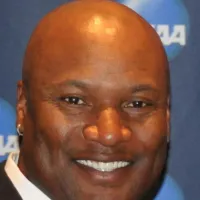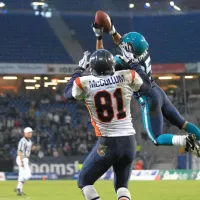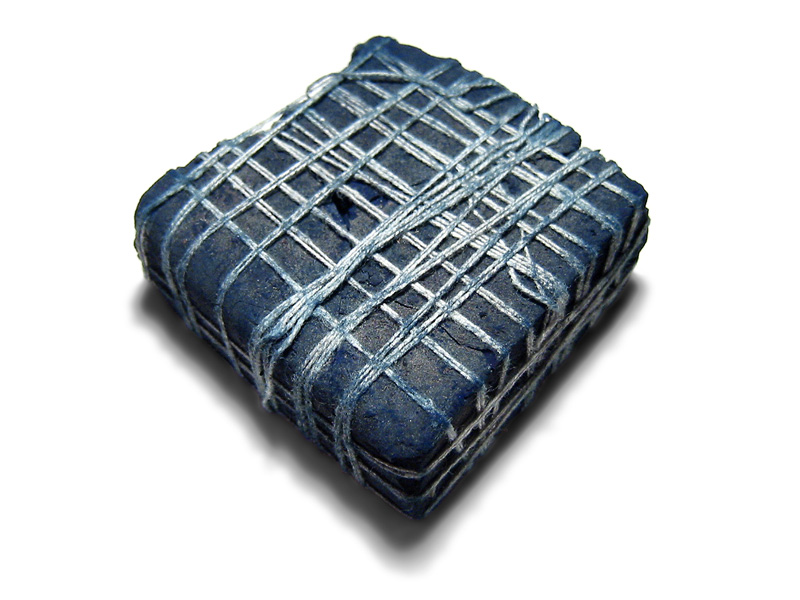The Kansas City Royals, founded in 1969, are a Major League Baseball team in the American League Central Division. They have a generally poor all time record, but have appeared in four World Series, winning in 1985 and 2015, and losing in 1980 and 2014. The Royals had a dominant 10-year stretch between 1976 and 1985, as well as a brief resurgence from 2013 to 2015.
1955: Athletics Played in Kansas City
From 1955, the Athletics played in Kansas City, before moving in 1967.
1968: Demand for a New Franchise
In 1968, U.S. Senator Stuart Symington demanded a new franchise for Kansas City after the Athletics moved.
1968: Name-The-Team Contest
In 1968, the Kansas City Royals held a name-the-team contest that received more than 17,000 entries. Sanford Porte won with the name “Royals”.
April 8, 1969: Inaugural Game Win
On April 8, 1969, the Kansas City Royals defeated the Minnesota Twins 4–3 in 12 innings in their inaugural game.
1969: Franchise History Start
From 1969 to 2024, the Royals have an all time win–loss record of 4,208–4,623 (.477).
1969: Expansion Franchise Founded
In 1969, the Kansas City Royals were founded as an expansion franchise in Major League Baseball.
1969: Royals Begin Play Due to Pressure
In 1969, the Royals began play due to pressure from Senator Stuart Symington.
1969: First Season
In 1969, the Royals went 69–93 in their first season, highlighted by Lou Piniella winning the AL Rookie of the Year Award.
1970: Worst Record Since
In 1990, the Royals had their worst franchise record since 1970.
1971: Uniform Changes and Introduction of Blue Cap
For the 1971 season, the "Kansas City" on the road uniforms were changed to block lettering, while both uniforms added a roundel containing the team logo on the left sleeve. The blue cap with "KC" stitched in front was also introduced and remains in use today.
1971: Original Plan for Royals Start
In 1971, Kansas City was originally supposed to get one of four expansion teams.
1971: First Winning Season
In 1971, the Kansas City Royals had their first winning season, led by manager Bob Lemon.
1971: Original Use of 'Kansas City' Wordmark
In 1971, the Royals started using the block "Kansas City" wordmark on their uniforms, a design that would later be brought back in 2022.
April 10, 1973: Stadium Debut
On April 10, 1973, the Kansas City Royals played at Kauffman Stadium, formerly known as Royals Stadium.
1973: All-Star Game Hosted at Royals Stadium
In 1973, the All-Star Game was hosted at Royals Stadium, with Amos Otis and John Mayberry in the AL starting lineup.
1973: Uniform Change and Stadium Move
In 1973, the Kansas City Royals adopted their iconic "powder blue" road uniforms and moved to Royals Stadium (now Kauffman Stadium).
1973: Switch to Pullover Uniforms
The Royals switched to pullover uniforms for the 1973 season. The road uniform changed to a powder blue base and white letters.
1976: Division Championships Begin
From 1976 to 1978, the Royals won three straight division championships.
1976: Playoff Appearances Begin
From 1976, the team started appearing in the playoffs, continuing to 1985.
1976: Yankees win ALCS against Royals
In 1976, the New York Yankees won the American League Championship Series against the Kansas City Royals.
1976: Royals' first playoff appearance
In 1976, the Royals made their first playoff appearance with Whitey Herzog as the manager.
1976: Reference to Cincinnati Reds' Record
In 2014, the Royals broke a major league record previously held by the Cincinnati Reds in 1976 for consecutive postseason wins in one year.
1977: Yankees win ALCS against Royals
In 1977, the New York Yankees won the American League Championship Series against the Kansas City Royals.
1977: Royals' second playoff appearance
In 1977, the Royals made their second playoff appearance with Whitey Herzog as the manager.
1978: Third Straight Division Championship
From 1976 to 1978, the Royals won three straight division championships.
1978: Yankees win ALCS against Royals
In 1978, the New York Yankees won the American League Championship Series against the Kansas City Royals.
1978: Royals' third playoff appearance
In 1978, the Royals made their third playoff appearance with Whitey Herzog as the manager.
1978: Names Added to Uniforms
In the 1978 season, names were added to the Royals' uniforms.
1980: Royals win ALCS against Yankees
In 1980, the Royals won the American League Championship Series against the New York Yankees.
1980: ALCS Victory and World Series Appearance
In 1980, under Jim Frey, the Royals advanced to the ALCS, beat the Yankees, and lost to the Philadelphia Phillies in the World Series.
1980: Best Record Since 1980
In 2015, the team ended the regular season with a record of 95–67, the best in the entire American League, and the organization's best record since 1980.
1982: End of Use of 'Kansas City' Wordmark
In 1982, the Royals stopped using the block "Kansas City" wordmark on their uniforms, a design that was used from 1971 to 1982 and would later be brought back in 2022.
July 1983: The Pine Tar Incident
In July 1983, the "Pine Tar Incident" occurred when George Brett's home run was initially disallowed due to illegal pine tar placement on his bat, but later reinstated.
1983: Return to Buttoned Uniforms
For the 1983 season, the Royals returned to wearing buttoned uniforms. The powder blue uniform changed to "Royals" in script instead of "Kansas City". Numbers were added on the left chest of both uniforms.
1983: Organizational Changes
In 1983, Ewing Kauffman sold 49% of his interest to Avron Fogelman, and John Schuerholz was named general manager.
1983: Pine Tar Incident
In 1983, the Pine Tar Incident happened between the Royals and the Yankees.
1984: Division Championship and ALCS Loss
In 1984, the Kansas City Royals won their fifth division championship but were swept by the Detroit Tigers in the ALCS.
1985: World Series Win
Following the 1985 World Series win, the Royals maintained a reputation as one of the American League West's top teams.
1985: Division Title and ALCS Comeback
In 1985, the Kansas City Royals topped the Western Division and rallied from series deficits to win the ALCS against the Toronto Blue Jays.
1985: Royals' victory over the Cardinals in the World Series
In 1985, the Royals defeated the St. Louis Cardinals in the World Series, a series known as the "I-70 Series", marking the beginning of a true rivalry between the two teams.
1985: Mention of Bret Saberhagen's Cy Young Award
In 2009, Zack Greinke joined Bret Saberhagen (in 1985 and 1989) as the third player in Royals history to receive the Cy Young Award.
1985: First Division Title Since 1985
In 2015, the Royals secured their first division title since 1985.
1985: Reference to 1985 World Series
The text references the Royals' final three wins of the 1985 World Series as part of their multi-year postseason streak.
1986: Postseason Drought Begins
From 1986 to 2013, the Royals did not qualify for the MLB postseason.
1987: Dick Howser's No. 10 retired
Following his death in 1987, former manager Dick Howser's No. 10 was retired by the Royals.
1989: Powerhouse Pitching Rotation
At the end of the 1989 season, the Kansas City Royals boasted a powerhouse pitching rotation including Bret Saberhagen, Mark Gubicza and Tom Gordon.
1989: Winning Record, No Playoffs
In 1989, the Kansas City Royals finished with a 92–70 record but did not qualify for the playoffs.
1989: Mention of Bret Saberhagen's Cy Young Award
In 2009, Zack Greinke joined Bret Saberhagen (in 1985 and 1989) as the third player in Royals history to receive the Cy Young Award.
1989: Most Wins Since 1989
The Royals finished the 2014 regular season with a record 89–73, still the most wins for the Royals since 1989.
1990: John Schuerholz departed
In 1990, General Manager John Schuerholz departed from the Royals organization.
1990: Brett's Batting Title
In 1990, George Brett won his third batting title.
1990: Off-season Acquisitions and Disappointing Season
Prior to the 1990 season, the Royals acquired Mark Davis and Storm Davis, but the team had a disappointing season finishing with a 75-86 record.
1991: Last time Powder Blue Uniforms with Powder Blue Pants Were Worn
In 1991, the Royals last wore a combination of powder blue alternate uniforms with powder blue pants, before they would be worn again for select games starting in 2023.
1992: Resumption of Grey Road Uniforms
For the 1992 season, the Royals resumed wearing grey uniforms on the road, but the uniforms retained the "Royals" script and letters in blue with white trim.
1993: Ewing Kauffman died
In 1993, team owner Ewing Kauffman died and set up a succession plan to keep the team in Kansas City.
1994: Introduction of Blue Alternate Uniform
In 1994, a blue alternate uniform was introduced, with "Royals" script and letters in white.
1994: Moved to AL Central
In 1994, the Royals moved from the AL West to the newly created AL Central along with the Chicago White Sox and Minnesota Twins, joined by the Cleveland Indians and Milwaukee Brewers from the AL East.
1994: Winning Record Since 1994
In 2003 the Royals achieved their first winning season since 1994.
1994: Mention of David Cone's Cy Young Award
In 2009, Zack Greinke joined David Cone (in 1994) as the third player in Royals history to receive the Cy Young Award.
1994: Best Winning Percentage since 1994
In 2013, the Royals secured the team's best winning percentage since 1994.
1994: Payroll Reduction
In the 1994 season, the Royals reduced payroll by trading pitcher David Cone and outfielder Brian McRae.
1994: Winning Record in Strike-Shortened Season
In the strike-shortened 1994 season, the Kansas City Royals still managed to post a winning record.
1995: Start of Losing Seasons
From 1995 to 2012, the Royals had only one winning season.
April 5, 1996: Sluggerrr's First Appearance
Sluggerrr, the lion mascot of the Kansas City Royals, made his first appearance on April 5, 1996.
1996: Payroll Sliced
In 1996, the Royals' team payroll was sliced in half from $40.5 million in 1994 (fourth-highest in the major leagues) to $18.5 million (second-lowest in the major leagues).
1997: Revival of I-70 Series in non-exhibition games
In 1997, interleague play allowed the I-70 Series to be revived in non-exhibition games between the Royals and the St. Louis Cardinals.
1998: Brewers left AL Central
In 1998, the Milwaukee Brewers left the AL Central for the NL Central, and were replaced by the Detroit Tigers moving from the AL East.
1999: Payroll Falls Again
By 1999, the Kansas City Royals' team payroll had fallen again to $16.5 million and the team set a franchise-low with a .398 winning percentage (64–97 record).
1999: Miles Prentice bid for the team
In 1999, New York City lawyer and minor league baseball owner Miles Prentice bid $75 million for the team, vowing not to move the team from Kansas City. MLB rejected Prentice's first bid without specifying any reason.
March 13, 2000: Glass' bid accepted
On March 13, 2000, the Foundation voted to accept David Glass' bid of $96 million, rejecting Miles Prentice's revised bid of $115 million for the team.
2001: Lost 97 games
In 2001, the Royals lost 97 games again.
January 1, 2002: Kauffman Restrictions End Date
January 1, 2002 marked the end date of the Kauffman restrictions, after which the team was to be sold to the highest bidder if no local owner was found.
2002: Addition of black to color scheme and uniforms
In 2002, the Royals added black to their color scheme, which was reflected in the team's uniforms. The home uniforms were updated to remove blue piping and include black drop shadows.
2002: Lost 100 games for the first time
In 2002, the Royals set a new team record for futility, losing 100 games for the first time in franchise history. They fired manager Tony Muser, and he was replaced by Tony Peña.
July 2003: First Winning Month
In June 2007, the Royals had their first winning month since July 2003.
August 29, 2003: Latest Date Leading Division
The Royals reached the top of the division standings on August 11, 2014 after winning their eighth game in a row. This marked the latest date the Royals had led their division since August 29, 2003.
2003: Sleeveless Uniforms Introduced
In 2003, the Royals introduced sleeveless uniforms with blue undershirts for home games. The grey uniforms also removed sleeves and piping, paired with black undershirts and a black cap with a blue brim. A black alternate uniform with blue piping and "Royals" in blue was also introduced.
2003: First Winning Season since 2003
In 2013, the Royals clinched their first winning season since 2003.
2003: Winning Record
The 2003 season saw a temporary end to the losing, when manager Tony Peña, in his first full season with the club, guided the team to its first winning record (83–79) since 1994 and a third-place finish in the AL Central. He was named the American League Manager of the Year for his efforts and shortstop Ángel Berroa was named AL Rookie of the Year.
2003: Cardinals hold slight advantage in I-70 Series
Through the 2003 season, the Cardinals held a slight advantage with a 14–13 record in the I-70 Series.
2004: Rebuilding Mode
In 2004, the Royals, after a disappointing start, entered a rebuilding mode by releasing veteran reliever Curtis Leskanic and trading veteran reliever Jason Grimsley and superstar center fielder Carlos Beltrán for prospects.
2004: Losing Streak Begins
The 2004 season marked the beginning of a nine-year stretch of consecutive losing records for the Royals.
2005: All-Time Record for Losses
In 2005, the Royals set the franchise's all-time record for losses (56–106).
2005: Youth Movement
In 2005, the team continued a youth movement but finished with a 56–106 record (.346), a full 43 games out of first place, marking the third time in four seasons that the team reestablished the mark for worst record in franchise history. The season also saw the Royals lose 19 games in a row, a franchise record. During the season manager Tony Peña quit and was replaced by interim manager Bob Schaefer until the Indians' bench coach Buddy Bell was chosen as the next manager.
2005: Lowest Win Total Since 2005
In 2018, the team finished with only 58 wins, the team's lowest win total since 2005.
2006: Elimination of black and return to sleeved uniforms
In 2006, the Royals eliminated black from their uniforms and returned to wearing sleeved uniforms with arm piping. The "Kansas City" script was brought back on road uniforms. The black uniforms were briefly used with the "Kansas City" script before being retired.
2006: 100 Losses
In 2006, the Royals lost at least 100 games for the third season in a row.
2006: Another 100-loss season
In 2006, the Royals struggled through another 100-loss season, becoming just the eleventh team in major league history to lose 100 games in three straight seasons. During the season Allard Baird was fired as GM and replaced by Dayton Moore.
February 22, 2007: Denny Matthews wins Ford C. Frick Award
On February 22, 2007, Denny Matthews was selected as the 2007 recipient of the Ford C. Frick Award, presented annually for major contributions to baseball broadcasting.
June 2007: First Winning Month
In June 2007, the Royals had their first winning month since July 2003.
2007: Reference to Colorado Rockies' Record
In 2014, the Royals broke the Colorado Rockies' 2007 major league record for consecutive postseason wins in one year.
2007: Dan Quisenberry and Mike Sweeney's No. 29 Unassigned
No. 29, worn by Royals greats Dan Quisenberry (238 saves, 2.55 ERA) and Mike Sweeney (.299 batting average, 197 home runs, 837 RBI), has not been assigned since Sweeney's departure in 2007.
2008: Introduction of new powder blue alternate uniform
In 2008, the Royals introduced a new powder blue alternate uniform with "Royals" in blue with white trim, and letters in white with blue trim.
2008: KCSP (610 AM) begins carrying Royals games
KCSP, 610 AM had been carrying games since 2008.
2008: Started well, finished poorly
The 2008 season began with the release of fan-favorite Mike Sweeney and the trade of Ángel Berroa to the Dodgers. Through 13 games in 2008, the Royals were 8–5 and in first place in the AL Central, a vast improvement over their start from the previous season. However, by the All-Star break, the Royals were again in losing territory, and finished the season in fourth place in the division with a 75–87 record.
2009: Zack Greinke wins Cy Young Award
Prior to the 2009 season, the Royals renovated Kauffman Stadium, and after the season began, the Royals ended April at the top of the AL Central. Starter Zack Greinke went on to finish the year with a Major League-leading 2.16 earned run average, and won the American League Cy Young Award.
2010: Brief pairing of powder blue uniforms with powder blue cap
In 2010, the Royals' powder blue alternate uniforms were briefly paired with a powder blue cap with a blue brim.
2010: Trey Hillman fired; Ned Yost hired
The 2010 season began with a rocky start, and after the team's record fell to 12–23, manager Trey Hillman was fired. Former Milwaukee Brewers skipper Ned Yost took over as the 16th manager in franchise history.
2011: Hosmer wins AL Rookie of the Month award
The 2011 season saw Eric Hosmer win the AL Rookie of the Month award in July and September and finished the season with 19 home runs. Moustakas collected a fifteen-game hitting streak, which tied the longest such streak by a Royals rookie. The Royals finished the 2011 season with a 71–91 record, in fourth place in the AL Central.
July 10, 2012: MLB All-Star Game
On July 10, 2012, the Royals hosted the Major League Baseball All-Star Game at Kauffman Stadium, which the National League won 8–0.
December 10, 2012: Trade with Rays
On December 10, 2012, the Royals traded for Rays pitchers James Shields and Wade Davis, giving Tampa top prospects Wil Myers, Jake Odorizzi, Mike Montgomery, and Patrick Leonard in return.
2012: TV Broadcasts
For the 2012 season, Ryan Lefebvre was joined by Jeff Montgomery for about 20 televised Royals games, while the rest of the broadcasts were covered by former Angels announcer duo of Rex Hudler and Steve Physioc. Televised games are aired on FanDuel Sports Network Kansas City, a branch of FanDuel Sports Network Midwest.
2012: End of Losing Seasons
From 1995 to 2012, the Royals had only one winning season.
2012: Improved by one game
In 2012, the Kansas City Royals improved by one game to 72–90, but finished one spot better in the division.
2012: Adjustment in 'Kansas City' script size and color lettering scheme
Prior to the 2012 season, there was a slight adjustment in the size of the "Kansas City" script on the road uniforms. Also starting in 2012, the color lettering scheme in front was reversed on the powder blue alternate uniform.
2012: Losing Streak Ends
The 2012 season marked the end of the Royals' nine-year streak of consecutive losing records.
2013: Postseason Drought Ends
From 1986 to 2013, the Royals did not qualify for the MLB postseason.
2013: First Winning Season Since 2003
In 2013, the Royals won their 82nd game of the season to clinch the franchise's first winning season since 2003. The Royals finished the season 86–76 and in third place in the AL Central, securing the team's best winning percentage since 1994.
2013: Lou Pinella's comments on rivalry with Royals
In a 2013 article about the 1983 Pine Tar Incident involving the Yankees and Royals, Lou Pinella said that there was no love lost between the teams, highlighting their rivalry.
July 21, 2014: Losing Record
On July 21, 2014, the Royals had a losing record (48–50) and were eight games behind the Detroit Tigers in the AL Central standings.
October 11, 2014: Royals Defeat Orioles in ALCS Game 1
On October 11, 2014, the Royals defeated the Baltimore Orioles 8–6 in the opening game of the ALCS, hitting two home runs in the 10th inning. This brought their total to four home runs in eight extra innings over five postseason games, which was more than any team in Major League Baseball history.
October 14, 2014: Royals Beat Orioles, Lead ALCS 3-0
On October 14, 2014, the Royals hosted the Baltimore Orioles at Kauffman Stadium, winning 2-1. Pitcher Jeremy Guthrie allowed only one run, giving KC a 3-0 lead in the series after game three. The ALCS was delayed one day due to rainy weather.
2014: Record-Setting Postseason Run
In 2014, after qualifying for the postseason, the Royals went on an eight-game winning streak. They won the American League Wild Card Game against the Oakland Athletics 9-8 and swept the Los Angeles Angels of Anaheim in the American League Division Series before advancing to the ALCS.
2014: New Blue Alternate
In 2014, powder blue was added as a trim color when the Royals issued a new blue alternate. The "KC" insignia replaced "Royals" and the number in front, while piping was added.
2014: Wild Card Berth and World Series Appearance
In 2014, the Kansas City Royals secured a wild card berth and advanced to the World Series, losing to the San Francisco Giants.
2014: Wild Card Entry to Playoffs
In 2014, the Royals earned a wild card entry to the playoffs.
2014: Royals Face Giants in World Series
In 2014, the Royals played the San Francisco Giants in the World Series. They had home-field advantage due to the American League's win in the 2014 All-Star Game.
2014: Johnny Cueto Named All-Star
In 2015, the Royals traded for Johnny Cueto, who was a 2014 All-Star pitcher.
2014: Return to Postseason
The 2014 season featured a return to the postseason for the first time in 29 years for the Kansas City Royals, and what would unfold as a historic playoff run from the Wild Card all the way to the 2014 World Series.
2015: Alternate White Uniform Introduced After World Series Win
After winning the 2015 World Series, the Royals began wearing an alternate white uniform, featuring "Royals" in metallic gold with blue trim.
2015: Royals Advance to World Series
In 2015, after rallying against the Houston Astros in the ALDS and defeating the Toronto Blue Jays in the ALCS, the Royals earned a trip to face the New York Mets in the 2015 World Series.
2015: AL Central Title and World Series Win
In 2015, the Kansas City Royals won their first AL Central division title and defeated the New York Mets in the World Series.
2015: Royals' Strong Season and Trade Acquisitions
In 2015, the Royals entered the All-Star break with the best record in the American League at 52-34. The team acquired Johnny Cueto and Ben Zobrist to strengthen their roster, ending the season with a 95-67 record, the best since 1980.
2015: Royals Win World Series and Division Title
In 2015, the Royals won the franchise's first division title since 1985 and their first Central division title ever. They also won the 2015 World Series, their first championship since 1985, defeating the New York Mets four games to one.
2015: First Playoff Berth Since 2015
The 2024 Royals clinched their first playoff berth since 2015 on September 27, 2024.
2016: Royals' TV ratings in 2016
During the 2016 season, the Royals averaged an 11.7 rating and 105,000 viewers on primetime TV broadcasts.
2016: Underachieving Season and Whit Merrifield's Debut
In 2016, the Royals had an inconsistent and injury-riddled season, finishing 81–81 and out of playoff contention. This season marked the debut of Whit Merrifield.
2017: End of World Series Core and Missed Playoffs
In 2017, pitcher Yordano Ventura passed away in a car accident on January 22nd. The Royals finished with a similar record to 2016 at 80–82 and missed the playoffs for a second consecutive year. Lorenzo Cain and Eric Hosmer became free agents after the season.
2017: Update to alternate white uniform
In 2017, the Royals' alternate white uniform was updated with the team name in blue with gold trim, and numbers in gold and blue trim. A new blue cap with "KC" in gold was paired with this uniform.
2018: Start of Rebuild and Merrifield's Emergence
In 2018, the Royals started a new rebuild, trading Mike Moustakas mid-season and giving playing time to young players. The team finished with 58 wins, the lowest since 2005, but Whit Merrifield led MLB in hits and stolen bases.
2018: Finished One Game Better Than 2018
The Royals finished the 2019 season one game better than 2018, at 59–103.
June 3, 2019: Royals Draft Bobby Witt Jr.
On June 3, 2019, the Royals selected Bobby Witt Jr. with the second pick in the MLB draft.
August 30, 2019: John Sherman Agrees to Purchase Team
On August 30, 2019, it was announced that John Sherman had agreed to purchase the Kansas City Royals from David Glass for a reported $1 billion.
October 31, 2019: Mike Matheny Hired as Manager
On October 31, 2019, the Royals announced the hiring of Mike Matheny to replace Ned Yost as manager.
2019: Removal of black drop shadows
In 2019, the black drop shadows were removed from the crown on the "KC" shield logo.
2019: New Team Owner
Since 2019, the Kansas City Royals have been owned by majority owner John Sherman.
2020: Shortened Season Due to COVID-19 Pandemic
In 2020, due to the COVID-19 pandemic, the MLB season was shortened to 60 games. The Royals finished with a 26–34 record.
2020: KCSP (610 AM) enters into a new four-year deal
KCSP, 610 AM entered into a new four-year deal starting from the 2020 season.
2021: Royals Improvement in 2021
In 2021, the Royals finished with a 74-88 record, showing improvement over 2019 and 2020. Salvador Pérez led MLB in home runs and RBIs, and Bobby Witt Jr. continued to develop as a top prospect.
November 2022: Plans Announced to Leave Kauffman Stadium
In November 2022, team owner John Sherman announced the team's plans to leave Kauffman Stadium before their lease expires at the end of the 2030 MLB season.
2022: "City Connect" uniforms debut
Also in 2022, the Royals wore "City Connect" uniforms in homage to Kansas City's "City of Fountains" moniker. The top of the uniform is navy blue with powder blue accents, with a stylized "KC" insignia on the left chest shaped to resemble a fountain of water shooting up. Pants worn are white with a powder blue stripe on each side. Caps are all-navy while helmets are navy with powder blue brim; both designs incorporate the "KC" in front.
2022: Dayton Moore Promoted and Roster Blending
Beginning with the 2022 season, Dayton Moore was promoted to President of Baseball Operations and J. J. Picollo became general manager. The Royals blended their roster with several rookies and finished with a 65–97 record. Mike Matheny was fired after the season finale.
2022: Fresh uniform set unveiled
In 2022, the Royals unveiled a fresh uniform set for the season. The primary home uniform remained the same, save for the thicker sleeve stripes. The road primary and blue road alternate returned to the block "Kansas City" wordmark the team used from 1971 to 1982, adding chest numbers on both uniforms. The alternate home powder blue uniform removed the royal blue elements, with the numbers taking the same color as the "Royals" script.
June 2023: Stadium Site Considerations
In June 2023, the Royals were considering the East Village neighborhood and North Kansas City as potential sites for a new stadium district.
2023: Powder blue uniforms with powder blue pants
Beginning in 2023, the Royals' powder blue alternate uniform would be worn with powder blue pants for select games, a combination not worn since the 1991 season.
2023: Team Valuation
Entering the 2023 season, the team is valued at US$1.2 billion, placing them 27th out of MLB's 30 teams.
2023: Matt Quatraro Hired as Manager
In 2023, Matt Quatraro was hired as manager, and the team finished with a record of 56–106.
2023: Cardinals lead I-70 Series 75-49
Through the 2023 season, the Cardinals hold the series advantage 75–49 in the I-70 series with the Royals.
February 2024: Crossroads District Chosen for Stadium
In February 2024, the Crossroads district emerged as the final site chosen by the Royals for a new stadium.
April 2024: Voters Reject Stadium Funding
In April 2024, Jackson County voters rejected a ballot initiative to help fund the Royals' new stadium project.
September 27, 2024: Royals Clinch Playoff Berth
On September 27, 2024, the Kansas City Royals clinched their first playoff berth since 2015.
November 2024: Potential Stadium Sites in Johnson County
In November 2024, it was reported that the Royals were examining "two or three" potential stadium sites in Johnson County, Kansas.
2024: Radio stations and announcers in 2024
As of 2024, the Royals flagship radio stations are KFNZ-FM (96.5) and KFNZ (610 AM). The radio announcers are Denny Matthews and Ryan Lefebvre, with Steve Stewart and Steve Physioc.
2024: Franchise History End
From 1969 to 2024, the Royals have an all time win–loss record of 4,208–4,623 (.477).
2024: Yankees win ALDS against Royals
In 2024, the New York Yankees won the American League Division Series against the Kansas City Royals in four games.
2024: Statistics current through 2024 season
Statistics current through 2024 season.
February 2025: Ned Yost Rejoins Team as Senior Advisor
In February 2025, former manager Ned Yost rejoined the team as a senior advisor to general manager J. J. Picollo.
2025: Full powder blue uniform every Saturday home game
In 2025, the Royals' full powder blue uniform would be worn every Saturday home game, and would be paired with their batting practice cap featuring the classic "KCR" crown logo in a white panel along with a powder blue crown and royal blue brim.
2027: Target for New Stadium Opening
The team plans to open a new stadium by the start of the 2027 or 2028 MLB season.
2028: Target for New Stadium Opening
The team plans to open a new stadium by the start of the 2027 or 2028 MLB season.
2030: Lease Expiration at Kauffman Stadium
Team owner John Sherman announced in November 2022 that the team plans to leave Kauffman Stadium prior to the end of their lease which expires at the end of the 2030 MLB season.
Mentioned in this timeline

The lion Panthera leo is a large cat species native...

San Francisco is a major commercial financial and cultural hub...

Bo Jackson is a former professional baseball and football player...

Los Angeles is the most populous city in California and...
Arizona is a landlocked state in the Southwestern U S...

Football is a family of team sports primarily involving kicking...
Trending

47 minutes ago Jeff Bridges' movie with terrible ending, Western comedy streaming free and charity work.

48 minutes ago Ryan Gosling's Star Wars: Starfighter avoids Skywalker Saga themes with new composer and changes.

48 minutes ago Connor Bedard scores bar-down goal, showcasing amazing release for the Blackhawks.

49 minutes ago Herbstreit Pleads for Big Non-Conference Games as Alabama Adjusts Future Football Schedule

49 minutes ago IndiGo's flight chaos: Staff shortage causes cancellations, airline seeks pilot rule relief.
49 minutes ago Tigers Pursue Kyle Finnegan in Free Agency: Mutual Interest and Potential Deal
Popular
Aftyn Alyssa Behn is an American politician currently serving as...
Matt and Ross Duffer known as the Duffer Brothers are...

Lane Kiffin is an American football coach currently serving as...

XXXTentacion born Jahseh Dwayne Ricardo Onfroy was a controversial yet...

William Franklin Graham III commonly known as Franklin Graham is...

Stranger Things created by the Duffer Brothers is a popular...